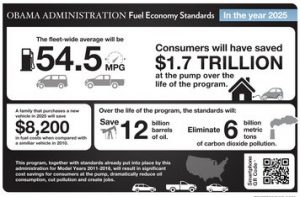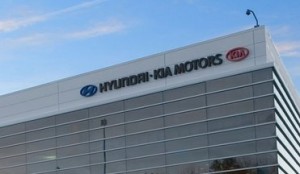by Jon LeSage, editor and publisher, Green Auto Market
Here’s my take on the 10 most significant and interesting occurrences during the past week…….
 Best fuel economy rating: The soon-to-be-released 2017 Hyundai Ioniq Electric took the No. 1 ranking for MPGe (miles per gallon equivalent) at 136 MPGe in combined fuel economy. The Ioniq Electric beat the all-electric BMW i3 with its 124 MPGe rating and 60 Amp-hour battery. The BMW i3 with a 94 Amp-hour battery came in fourth place at 119 combined MPGe. The BMW i3 REX (94 Amp-hour battery) and its range extender gasoline engine came in 7th place at MPGe combined. The upcoming Chevy Bolt took third place at 119 combined MPGe. It will have nearly double the range with the Bolt able to go 238 miles per charge versus 124 miles for the Ioniq Electric. These rankings come from the Fuel Economy Guide for model year 2017, which was just released by the U.S. Department of Energy (DOE) and the U.S. Environmental Protection Agency (EPA).
Best fuel economy rating: The soon-to-be-released 2017 Hyundai Ioniq Electric took the No. 1 ranking for MPGe (miles per gallon equivalent) at 136 MPGe in combined fuel economy. The Ioniq Electric beat the all-electric BMW i3 with its 124 MPGe rating and 60 Amp-hour battery. The BMW i3 with a 94 Amp-hour battery came in fourth place at 119 combined MPGe. The BMW i3 REX (94 Amp-hour battery) and its range extender gasoline engine came in 7th place at MPGe combined. The upcoming Chevy Bolt took third place at 119 combined MPGe. It will have nearly double the range with the Bolt able to go 238 miles per charge versus 124 miles for the Ioniq Electric. These rankings come from the Fuel Economy Guide for model year 2017, which was just released by the U.S. Department of Energy (DOE) and the U.S. Environmental Protection Agency (EPA).- Trump and EVs: It’s too early tell what actions the Trump administration will take affecting electric vehicle adoption in the U.S. “The short answer is that we don’t know what will happen with the Trump administration and electric vehicles,” said Dave Reichmuth, senior engineer for the Union of Concerned Scientists clean vehicles program. “It might be awhile before we understand the policy priorities for the new administration.” Reichmuth said that the federal EV tax credit, which can go as high as $7,500 per electric car, is embedded in the larger federal tax code; removing it would require action from Congress. Tesla CEO Elon Musk, who publicly endorsed Hillary Clinton for president, appears unfazed by the potential of less-EV-friendly regulations. Dan Sperling, founding director of the University of California Davis Institute for Transportation Studies, said the automaker industry’s letter to the Trump transition team should not be interpreted as a plea to drop emission or fuel economy standards altogether. “The industry has made a massive investment in electric vehicles,” Sperling said. “While some would prefer to slow it down, most companies are going to continue along that path.”
- Sustainable freight: The two largest North American ports, Los Angeles and Long Beach, have proposed the next version of the San Pedro Bay Ports Clean Air Action Plan (CAAP) that would aggressively deploy zero and near-zero emissions trucks and cargo-handling equipment. The ports also propose expanding programs that reduce ship emissions. Other proposals focus on freight infrastructure investment, innovation, and technology to improve supply chain efficiency and comprehensive energy planning. The updated CAAP provides one of California’s first opportunities to implement what was laid out in the state’s Sustainable Freight Action Plan.
- Toyota EVs: Toyota Motor Corp. is setting up a small in-house unit to develop battery electric vehicles. For now it will be a small team of four, with one from Toyota Motor Corp., Toyota Industries, Aisin Seiki Co., and Denso Corp. The company said it will be part of a larger strategy to develop alternative powertrain technologies. Toyota still emphasizes hydrogen fuel cell vehicles, which it called the “ultimate eco-car.”
- Mazda diesel and electric cars: Mazda Motor Corp. is moving beyond fuel efficient Skyactiv gasoline engine vehicles by adding diesel to the next-generation CX-5 crossover next year. Mazda also will introduce an electric vehicle in 2019 and a plug-in hybrid vehicle in 2021 or later, to meet increasingly stringent fuel economy rules. A revamped 2.2-liter Skyactiv-D clean diesel engine, modified to meet more stringent U.S. regulations for nitrogen oxide emissions, will be offered in the second-generation CX-5 during the second half of 2017, the company said. The next CX-5 debuted Tuesday at the L.A. Auto Show.
- Faraday factory: Electric supercar maker Faraday Future has stopped construction of its $1 billion electric vehicle factory in North Las Vegas, Nev. The Gardena, Calif., company, which has received backing and recent financial restructuring from tech billionaire Jia Yueting and Chinese company LeEco, said it plans to restart work on the plant in 2017. Last month, a construction firm working on Faraday Future’s factory warned the electric-car startup that it could face a work stoppage over millions of dollars in unpaid bills, raising questions about Faraday Future’s financial condition.
- 15 electric buses: California’s Central Valley took a major step to reduce emissions last week with a California Air Resources Board (CARB) funds award. The San Joaquin Valley Air Pollution Control District (SJVAPCD) will deploy 15 Proterra Catalyst electric buses, 11 Proterra depot-chargers, and four Proterra fast-chargers in order to improve local air quality and public health in disadvantaged communities throughout the San Joaquin Valley. Buses and charging deployment areas will reportedly include: the Fresno County Rural Transit Agency, the California State University Fresno, the City of Visalia Transit Division, the San Joaquin Regional Transit District, and the City of Modesto Transit Services.
- Sound factor: Hybrid and electric vehicles will now be required to make noise when traveling below 19 miles per hour. That ruling came from the National Highway Traffic Safety Administration after a long period of research and industry feedback. Known as the “quiet car” rule, regulators have taken a long time to decide on passing the regulation, as a ruling has been in the works since 2013. In the original proposal, the estimate was that it could reduce instances of injuries caused to pedestrians and bicycle riders by 2,800 per year, a figure that has since been reduced to 2,400 per year.
- NextEV: Chinese electric vehicle startup NextEV yesterday unveiled its record-breaking electric supercar, the first vehicle launched under the company’s new NIO brand. The new brand and the NIP EP9 electric supercar, which recently broke an electric vehicle lap record at Nürburgring Nordschliefe, were unveiled at a launch event in London. This is the first official launch since NextEV was founded in 2014. The company opened its Silicon Valley headquarters in October. Padmasree Warrior, former CTO at Cisco, is now serving as the U.S. CEO of NextEV.
- VW and Didi: Volkswagen announced last Thursday that it has been is in talks with China’s Didi Chuxing to set up a high-end ride-hailing service; the deal would also involve ambitious sales goals for electric and hybrid vehicles in the world’s largest auto market. That would help VW in its bid to beat General Motors as the largest-selling automaker in China. It would also be a channel for selling its ambitious plan for electric vehicle introductions in the wake of last year’s diesel emissions scandal. The automaker plans to sell 400,000 “new energy vehicles” in China by 2020 and 1.5 million by 2025. Didi is China’s largest ride-hailing company, with 300 million users across more than 400 cities.


